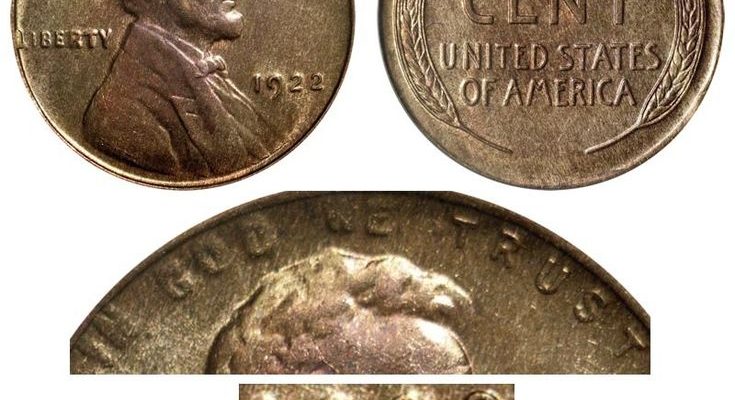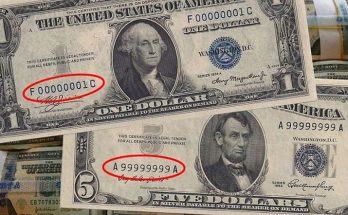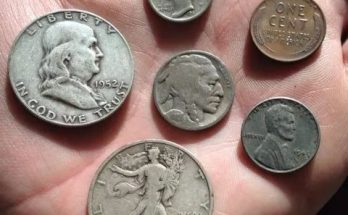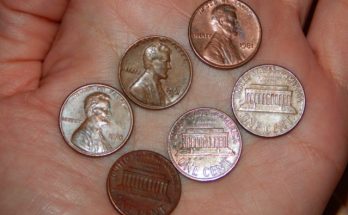Hunting for error coins is one of the most exciting aspects of the coin collecting hobby. These odd-looking coins are often some of the most valuable pieces that you can potentially find in pocket change.
We’ll be looking at a list of 13 valuable error coins from the United States. First, let’s consider the different types of error coins and how you can find them “in the wild”—that is, in circulation.
Types of Coin Errors
All error coins are essentially coin misprints. They are always the result of a mistake made during the manufacturing process at the mint (rather than post-mint damage). Error coins can be divided into three general categories.
Planchet Errors: A “planchet” is another word for the blanks that are used to make coins. Errors in this category involve improper preparation of coin planchets. Examples include clipped planchets that are the wrong shape, planchets that are the wrong thickness, and even planchets that are mistakenly left blank.
 This quarter was struck on the wrong planchet. Image:fleur-de-coin
This quarter was struck on the wrong planchet. Image:fleur-de-coin
Die Errors: The process of minting coins involves dies that impart the lettering, numbers, and images onto the surface of a coin. One die is used for the obverse (front, or “heads” side) of the coin, and other is used for the reverse (back, or “tails” side). If there is an issue or flaw with either die, it can lead to errors such as the doubling of design elements or the mismatching of two dies. The latter case results in what is known as a “mule” coin.
Strike Errors: Striking is the step in the minting process where the design from the die is impressed onto the coin. Strike errors include off-center or misaligned strikes, designs struck on the wrong size planchet, and other oddities.
 An example of a brockage error on a 19th-century coin. Image:fleur-de-coin
An example of a brockage error on a 19th-century coin. Image:fleur-de-coin
Again, it’s important to note that all error coins are made at the mint. Their release into circulation is always a mistake or oversight. This distinguishes coin misprints from coins that simply have post-mint damage—changes to the coin that happen after they leave the mint. Such damaged coins hold no value for collectors and are not considered errors.
How to Spot Error Coins
Finding error coins is rare, but not impossible. Keep in mind that all of these error types tend to occur in batches of coins, as the U.S. Mint strikes coins for mass production. A die flaw or miss-strike will affect all of the coins from a particular production run. So there are usually hundreds or a few thousand coins with the same error originating from the mint.
However, there are sometimes no reliable mintage estimates for coins with specific errors due to their accidental nature.
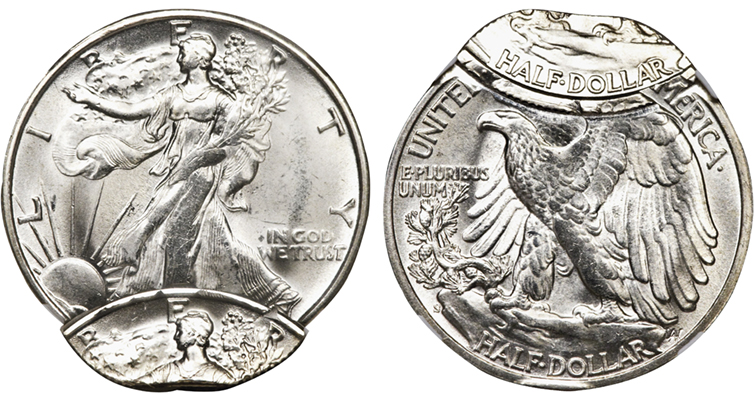 Most coin errors are not as obvious as this Walking Liberty half dollar!
Most coin errors are not as obvious as this Walking Liberty half dollar!
You will need a keen eye and plenty of patience to successfully spot an error coin. Knowing what to look for is crucial. Noting an unusual-looking coin is a good start, but being familiar with famous error types is an even better approach. Some coin errors are obvious, while others are more subtle and may require a magnifying glass to see.
Aside from carefully scrutinizing your pocket change, there are a few other places you should be looking. One popular strategy is to search through coin rolls, which you can get at any bank branch in exchange for their face value. Although this can be time-consuming, coin roll searching is guaranteed not to lose money. Even if you find nothing, the coins (as legal tender) are still worth exactly what you paid for them.
Cherrypicking is another common approach for error coin hunters. This simply means carefully looking through a group of coins one-by-one. You might do so with a coin lot offered at an estate sale, or from the “bargain bin” at a local coin shop.
List of Error Coins Worth Money
Over the years there have been too many valuable error coins to list them all here. But these are some of the most prominent in history of U.S. Mint. The order of the list goes from the lowest denomination (penny) to the highest.
1. 1922-D Plain Lincoln Cent
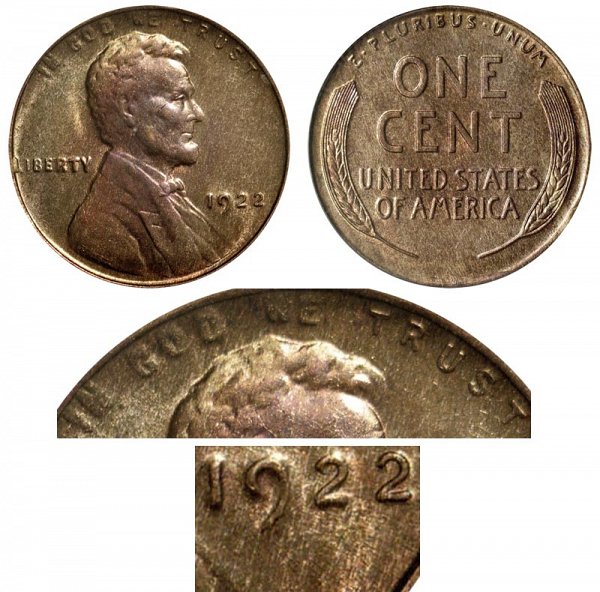 1922 “no D mintmark” Lincoln penny. Image:USA CoinBook
1922 “no D mintmark” Lincoln penny. Image:USA CoinBook
According to The Official Red Book: A Guide Book of United States Coins, in 1922 the Denver mint struck a number of pennies using heavily worn dies. As a result, many of the Lincoln cents made at this facility exhibited dull features and a “weak D” mintmark.
The results were even worse for a subset of these 1922-D cents. The accumulation of grease on the obverse die left a handful of pennies with missing design elements. Most notable among these was the absence of a D mintmark. These errors are known as “Plain” or “No D” Lincoln cents. Even if they are in fairly bad condition, these coins are worth over $500 each.
You can find a rundown of many Lincoln penny errors elsewhere on our blog.
2. 1943 Copper Lincoln Cent
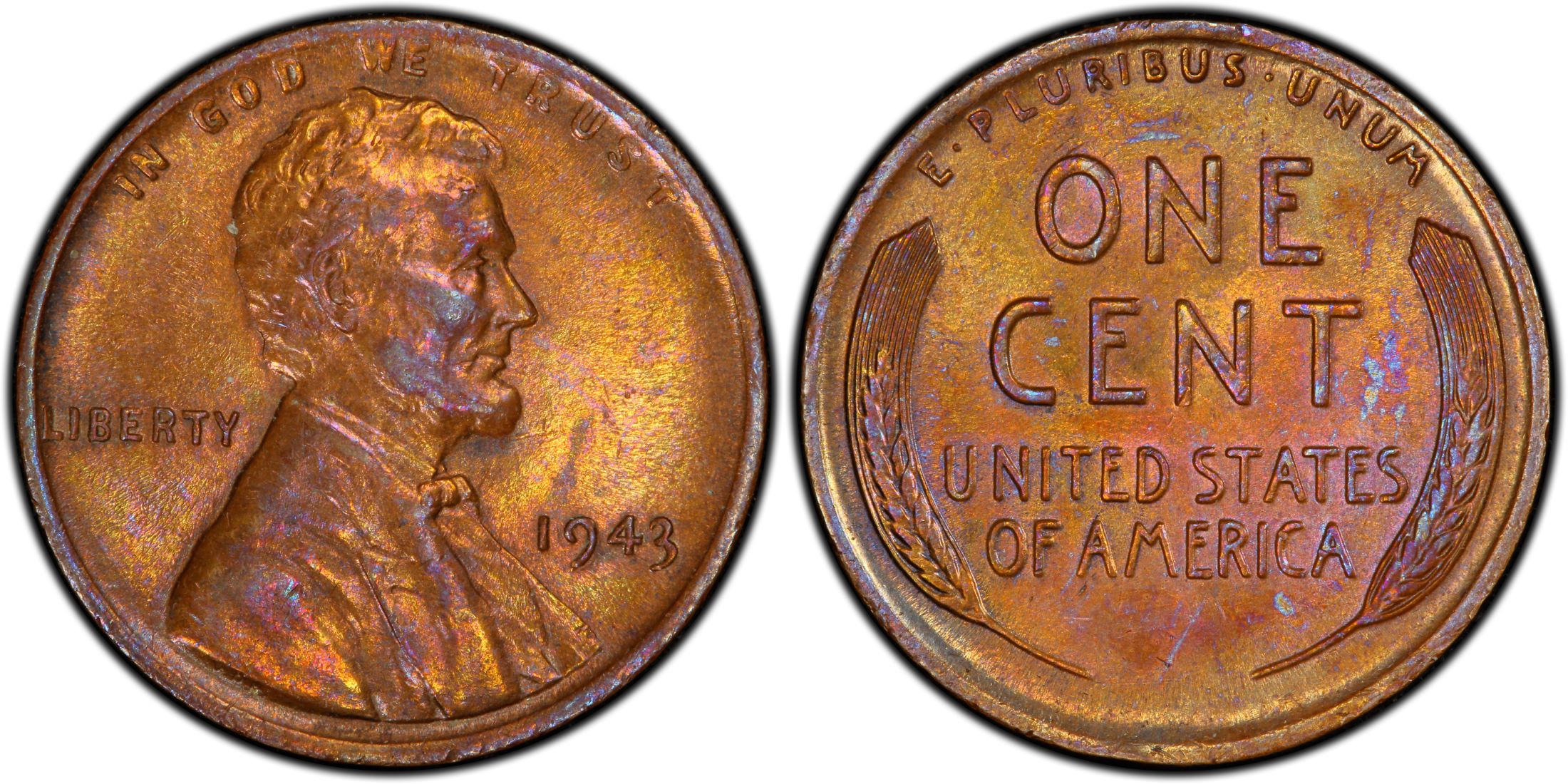 1943 bronze penny. Image: PCGS CoinFacts
1943 bronze penny. Image: PCGS CoinFacts
Many coin collectors know that World War II had an impact on American coinage. Not only were five-cent nickels switched to a 35% silver alloy from 1942 to 1945, but the penny also briefly got a new composition for one year, in 1943. A copper shortage prompted the mint to switch the one-cent coin to a steel composition, coated in zinc.
Over 1 billion of these steel cents were produced in 1943. However, a very small number of pennies—perhaps as few as 15—were incorrectly struck on the normal bronze planchet that year. The 1943 bronze cents are exceptionally valuable, easily crossing the $100,000 threshold. One example even sold in a private transaction for over $1 million!
3. 1944 Steel Lincoln Cent
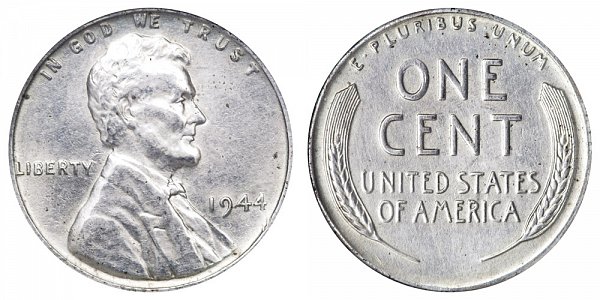 1944 steel penny. Image:USA CoinBook
1944 steel penny. Image:USA CoinBook
In 1944, the U.S. Mint resumed normal production of pennies made of copper. However, just like the year before, a handful of Lincoln cents were accidentally struck in the wrong composition. This time the culprit was the leftover zinc-coated steel planchets.
It’s a bit comical that the mint made the same mistake (in reverse) two years in a row. In addition to creating another rarity, the mishap has created confusion for numismatists and collectors in the following decades.
While the 1943 steel cents are commonplace, the 1944 error variety is exceedingly scarce. Any well-worn example of a 1944 steel penny will garner $75,000 or more.
4. 1955 DDO Lincoln Cent
The 1955 doubled die obverse Lincoln cent remains one of the most iconic coins—of any kind—in United States history. Today, it still ranks as perhaps the most well-known error among all American coins.
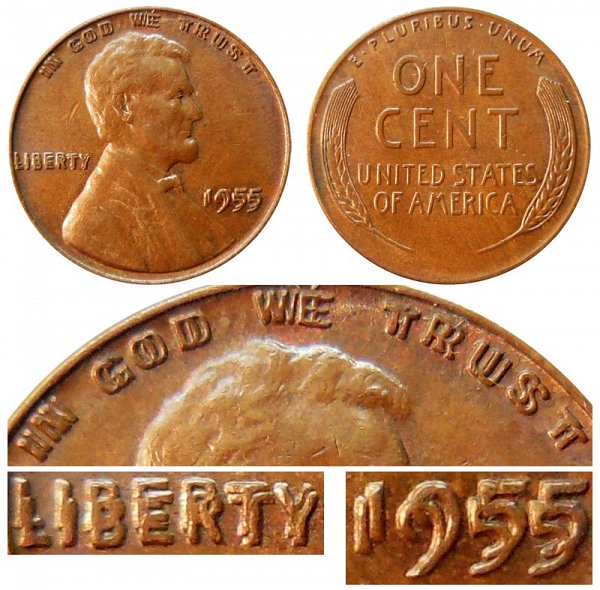 1955 doubled die obverse Lincoln Wheat cent. Image:USA CoinBook
1955 doubled die obverse Lincoln Wheat cent. Image:USA CoinBook
Thanks to improperly prepared dies, some number of the Lincoln pennies minted in Philadelphia in 1955 show extremely bold doubling of the date and lettering on the obverse of the coins. This dramatic appearance is part of what makes the DDO penny so collectible to this day.
Even a low-grade example of this coin sells for over $1,000.
5. 1974-D Aluminum Lincoln Cent
This error penny was virtually unknown to the world until 2001. Throughout the second half of the 20th century, the U.S. Mint experimented with different materials—including glass!—for making coins. Ultimately, the Treasury Department settled on copper-plated zinc for the Lincoln penny beginning in 1982.
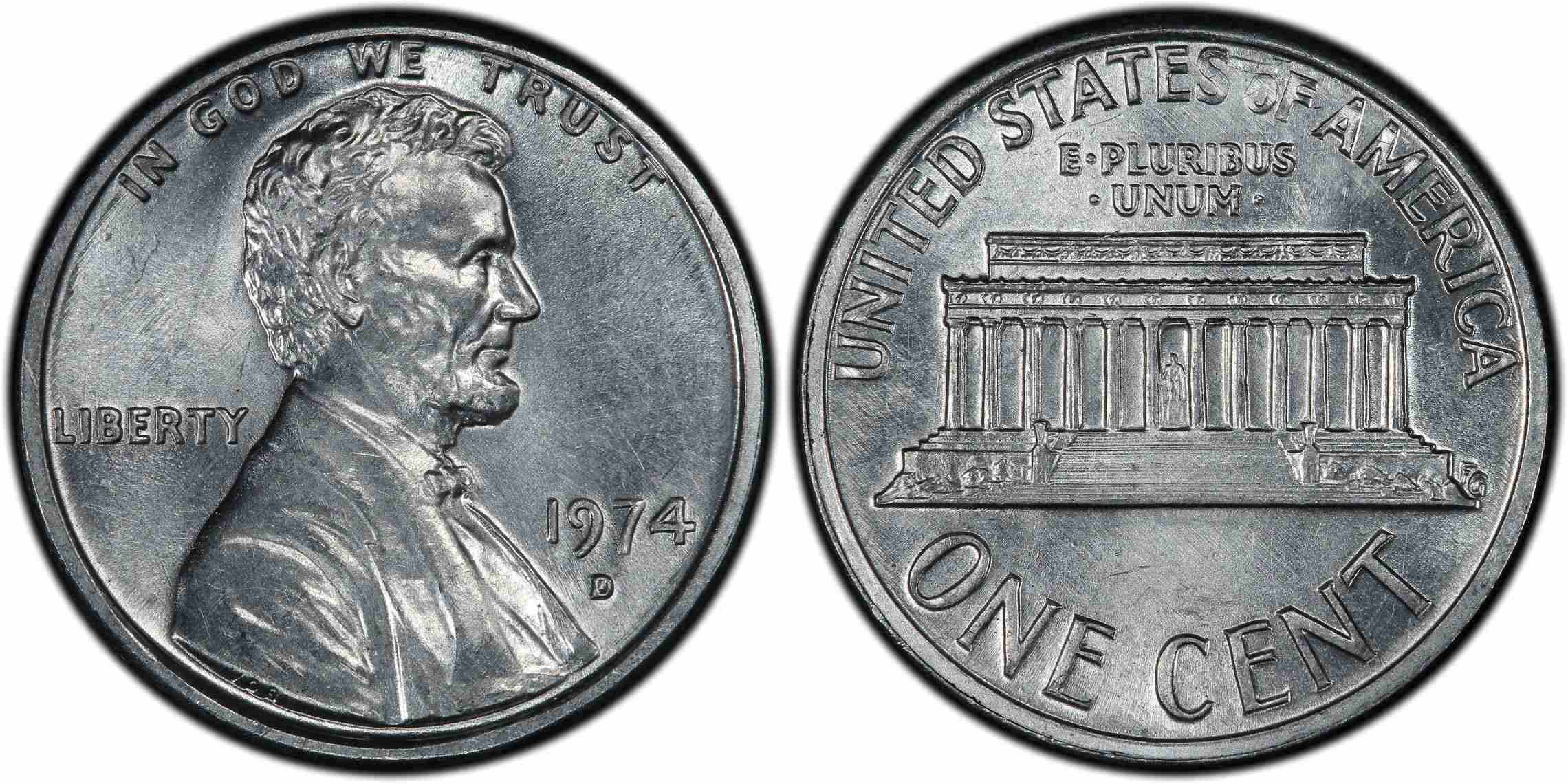 1974-D aluminum cent. Image:PCGS CoinFacts
1974-D aluminum cent. Image:PCGS CoinFacts
One of the experimental compositions that was rejected was an aluminum alloy. The pieces were shown to members of Congress and subsequently destroyed. By some misadventure, at least a dozen pennies made of aluminum escaped from the Philadelphia Mint (despite the D mintmark) in 1974. Thus far there are only two known to exist.
Astonishingly, the mint took the curious step of seizing one of the aluminum cents, deeming the coin to be government property. If another example is found (and deemed legal to own), it would easily realize six figures at auction.
6. 1937-D 3-Legged Buffalo Nickel
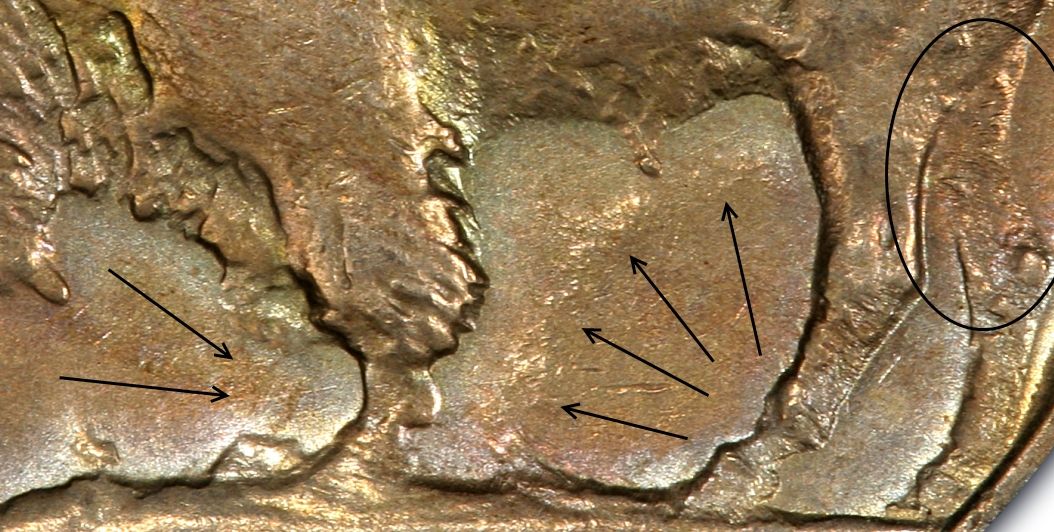 1937-D 3-Legged Buffalo nickel. Image:PCGS CoinFacts
1937-D 3-Legged Buffalo nickel. Image:PCGS CoinFacts
Another die error resulted in this case of a missing limb: the 3-legged buffalo. It is among the most famous error coins ever to exist, and undoubtedly the “key date” to the entire Buffalo nickel series.
Despite early popularity when the design debuted in 1913, the Buffalo nickel (also called the Indian Head nickel) was plagued by dies that quickly exhausted. The result was many weakly struck coins.
In 1937, the second-to-last year of the series, the mint employee who operated the coin presses at the Denver Mint tried to smooth down some scuffs on the nickel’s reverse die. He unintentionally smoothed away one of the buffalo’s legs in the process, causing the coin misprints.
An uncirculated specimen of the 1937-D 3-legged nickel runs about $2,500. Even “junky” examples are worth upward of $500.
7. 1942/1 Mercury Dimes
Another popular error variety to collect are overdate coins. This die error is pretty straightforward: When changing the year-date on the obverse die, the last digit of the previous year was not fully removed.
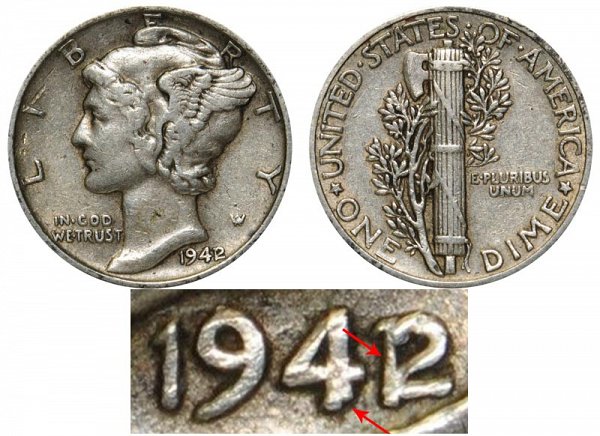 1942 “42 over 41” Mercury dime. Image:USA CoinBook
1942 “42 over 41” Mercury dime. Image:USA CoinBook
In the case of the “42 Over 41” Mercury dime, this resulted in the “1” still being visible behind the “2” of the date. Interestingly enough, this same overdate error appears on 1942 Mercury dimes from both the Philadelphia and Denver Mints.
Much like the other errors on this list, the 1942/1 dimes (from either mint) are worth about $400 in the lowest grades, with prices rising sharply for coins in better condition.
8. 1975 No S Proof Roosevelt Dime
As a general rule, you don’t normally see proof coins with errors. Proofs are specially made for collectors. Extra care is taken in their production, minimizing the chances of an error eluding the attention of mint workers.
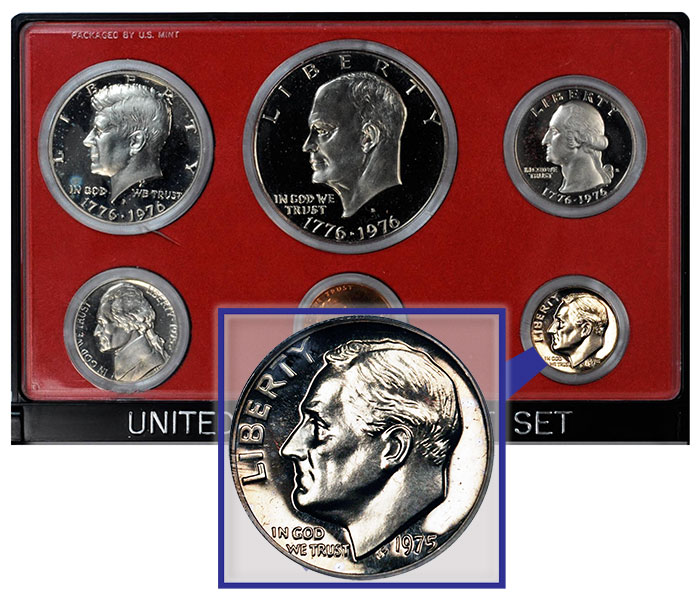 1975 No S Proof Roosevelt dime. Image:CoinWeek
1975 No S Proof Roosevelt dime. Image:CoinWeek
Nonetheless, the U.S. Mint somehow included a few dimes in their 1975 proof sets that lacked an S mintmark (from the San Francisco Mint). To date, two such examples of a 1975 Roosevelt dime proof with a missing mintmark have been identified. As far as anyone knows, these incredibly rare dimes could only be obtained from the annual mint proof sets.
It’s no surprise this coin is so valuable given its current population is just two. Prices are in the range of $450,000.
9. 1982 No P Roosevelt Dime
A similar mistake occurred with the circulation-strike Roosevelt dimes that came from the Philadelphia Mint in 1982. The mint had only recently added the P mintmark to its 10-cent coins, beginning in 1980. Previously, coins from the Philadelphia facility bore no mintmark.
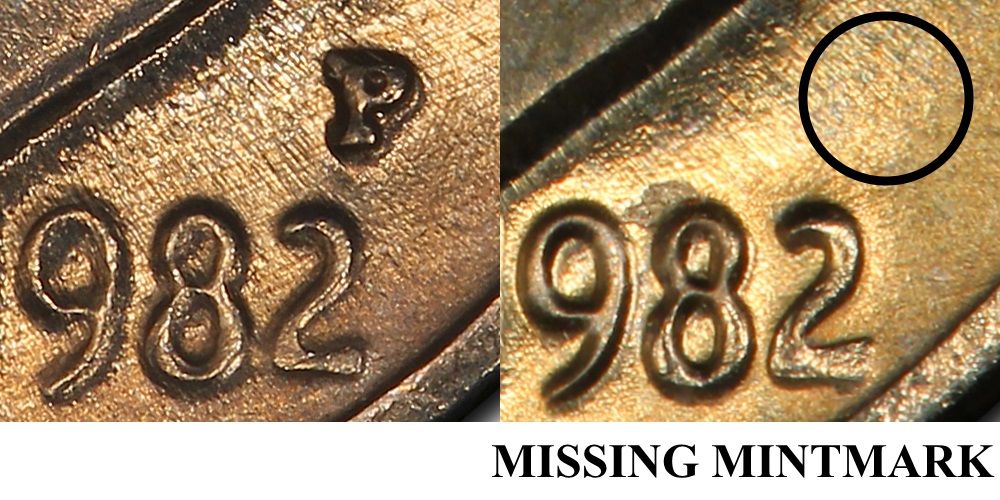 1982 No P Roosevelt dime. Image:PCGS CoinFacts
1982 No P Roosevelt dime. Image:PCGS CoinFacts
Somebody forgot to punch the “P” onto the obverse dies for the dime in 1982. (The process was still done by hand at the time.) Several thousand of these “No P” Roosevelt dimes were distributed before the mistake was caught. Compared to some of the earlier coins on this list, that might sound like a lot. Yet it’s a minuscule fraction of the entire 1982-P dime mintage of nearly 520 million coins.
Collectors will pay around $175 for a mint state example of one of these dimes.
10. 2004-D Extra Leaf Wisconsin State Quarters
One of the most contemporary entries on our list is the 2004-D Wisconsin State Quarter. Two different varieties of error due to a die flaw are known in this issue.
These are known as the Extra High Leaf and Extra Low Leaf errors. The appearance of the error on the design is precisely what it sounds like. In one case, there is an extra leaf on the ear of corn that points upward. The second version has an extra leaf that points downward.
 2004-D Extra Leaf Wisconsin quarters. Image: USA CoinBook
2004-D Extra Leaf Wisconsin quarters. Image: USA CoinBook
Given the recent timing of this error, the public was quick to collect these misprinted coins. After initially garnering as much as $500 apiece, prices cooled off as more examples were discovered. Today, either the High Leaf or Low Leaf varieties sell for between $50 and $100.
11. 1956 Bugs Bunny Franklin Half Dollar
Oftentimes, an error coin variety gains popularity thanks to an endearing nickname. This is undoubtedly the case with the “Bugs Bunny” Franklin half dollar, named after the beloved cartoon character.
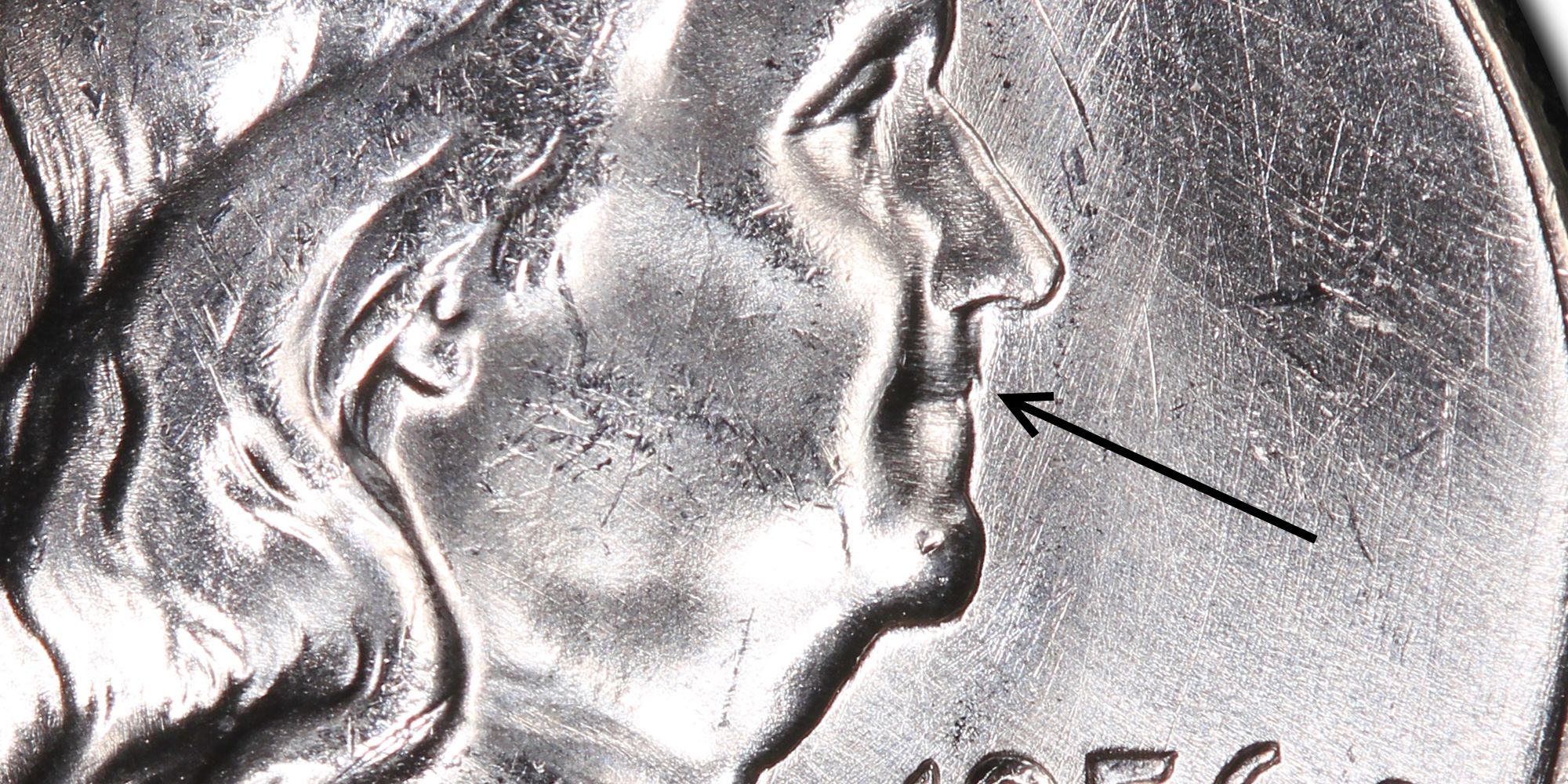 1956 Bugs Bunny Franklin half. Image:PCGS CoinFacts
1956 Bugs Bunny Franklin half. Image:PCGS CoinFacts
A die clash error resulted in some Franklin halves exhibiting a “buck-tooth” appearance on the obverse of coins dated 1955 and 1956. (Coins from the latter year are better known to collectors.) The error can be a bit subtle to the naked eye, but it stands out in comparison to a normal Franklin half.
As collectors started looking out for the Bugs Bunny error variety, many examples were discovered. It’s assumed that still more have yet to be identified. Thanks to the relative ease of finding one, these coins tend to be reasonably priced around $25.
12. 2000-P Sacagawea Dollar + Washington Quarter Mule
Mules are one of the strangest and most amusing kinds of errors. As mentioned earlier, a mule coin is the byproduct of the mismatched pairing of an obverse die and reverse die that don’t belong together.
The 2000-P Sacagawea dollar mule may be the best-known (and best-loved) of all mule coins. Struck on the planchet of “golden dollar” coins that debuted in 2000, the normal reverse is paired with the familiar obverse of a Washington quarter. The accidental combination is pleasing to the eye thanks to the coin’s golden hue and the similar size of the two denominations.
 2000-P Sacagawea Dollar mule coin. Image:CoinNews.net
2000-P Sacagawea Dollar mule coin. Image:CoinNews.net
Only 19 examples are known, and virtually all of them are in mint state. The average sale price for these mules is about $50,000.
13. 2007 Presidential Dollar Missing Edge Lettering
 2007 Presidential Dollar with missing edge lettering. Image:Presidential Dollar Guide
2007 Presidential Dollar with missing edge lettering. Image:Presidential Dollar Guide
As we’ve seen with missing mint marks, in some cases, coin errors can be errors of omission.
One of the intriguing aspects of the Presidential dollar coins introduced in 2007 was the presence of edge lettering. The edge (i.e. the “side” of the coin, along its circumference) of these coins feature inscriptions. This technique was more common in the late 1700s and early 1800s, as it frees up space on the rest of the coin design.
However, a decent number of the 2007 George Washington Presidential dollars made it out of the mint without these edge inscriptions. Fittingly, they are sometimes referred to as “Smooth Edge” dollars. It’s estimated that tens of thousands of these error coins exist, perhaps more than 100,000.
These dollar coins trade for around $20 but some in pristine condition have sold for over $100.
